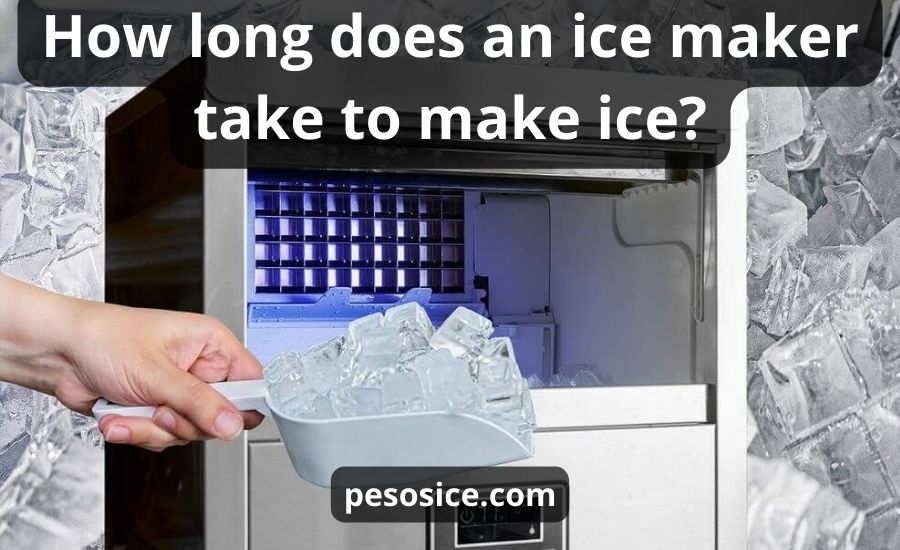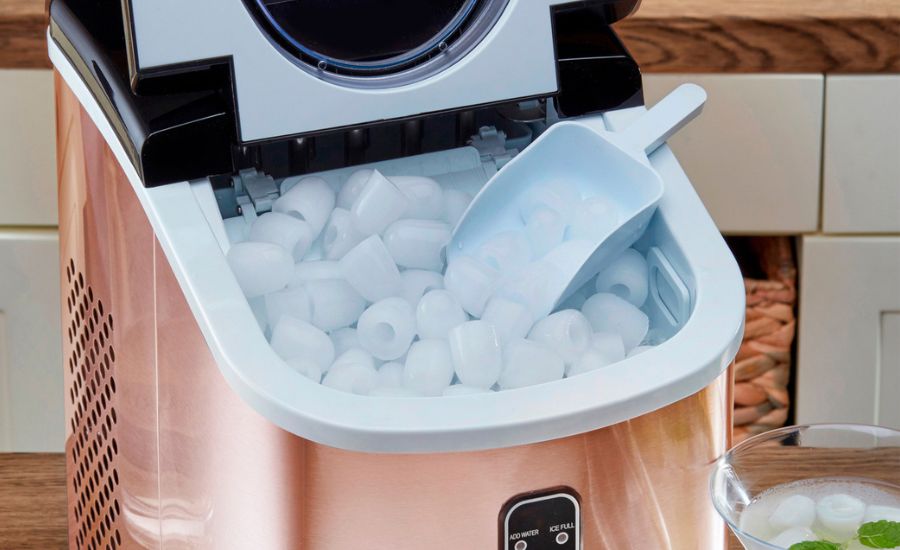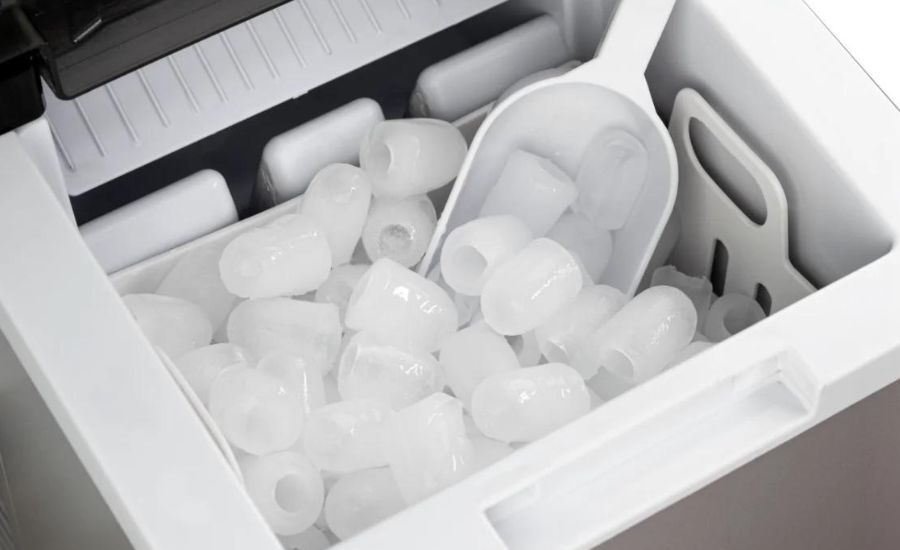
How long does an ice maker take to make ice? Ice makers are a staple in modern kitchens, but have you ever marveled about the time it takes for them to do their job? In this article, I’m exploring the ins and outs of the ice-making course, from the ice tray to the ice bin, and figuring out the time my ice maker will need to deliver the cubes to cool down my drink.

Unpacking the process
First, let me supply an approximate answer to the question in the headline. A more accurate answer, you’ll be able to discover yourself because it will vary depending on the fridge model. So, an ice maker brings in roughly 8 cubes of ice in 90-120 minutes. How much ice will it make per day? Roughly about 96-128 cubes.

Why so lengthy? Let’s find out.
Your typical refrigerator ice maker is a pretty cool piece of technology (pun intended). It goes through cycles to turn water into ice cubes. Some fridges even come with dual ice makers for extra efficiency to produce ice. But how much ice can you realistically expect, and what affects the output?
The ice maker’s cycle involves factors like water flow, freezer temperature, and the condition of the refrigerator water filter.
Local refrigerator repair technicians often stress the importance of maintaining optimal conditions for a smooth ice-making experience. Let’s break down how these elements work together to help the ice maker to make ice efficiently.
Your typical ice maker is a practical marvel operating in a series of steps that can be easily understood.
- Water inflow: it all starts with the ice maker activating the flow of water. To launch water into the refrigerator ice maker, there is a special valve that should open, thus letting the ice tray fill.
- Freezing commences: once the tray is filled, the freezing process kicks in. The freezer temperature drops, turning the water into ice. This phase usually takes some time and is influenced by the efficiency of your freezer.
- Ice cubes forge: as the water freezes, ice cubes take form in the little cubicles of the tray. The duration of this step depends on factors, like the freezer temperature and the ice tray configuration.
- Harvesting mode: when cubes are completely shaped, the ice maker goes into harvesting mode. It may involve a brief thawing or heating to release the ice from the tray. This step contributes to the overall duration of the cycle to conclude.
- Transfer to the ice bin: the ice produced is then transferred to the ice bin, ready for use. This step adds a practical touch to the process, ensuring a non-stop supply.
Ice production isn’t a robotic process; it’s more like a well-oiled machine.
From the quick cycles of a busy refrigerator’s ice maker to the gradual filling of the ice bin, each phase serves the ice maker to make ice.
It produces a variety of cubes of ice during the ice maker cycles, adding a touch of real-life variability.

Securing the ice maker top performance
Practical tips are key:
#1. Regularly check the refrigeration level
#2. Change the refrigerator water filter
#3. Keep an eye on cycle course duration of the ice maker.
These practical steps ensure a smooth flow of ice and a successful running of the refrigerator ice maker.
Suppose you notice that the smooth process is somehow disturbed, and something thwarts the refrigerator ice maker to make ice in the same bulk it used to, or it takes significantly longer for the ice maker to make ice. In that case, I recommend going to the local refrigerator repair technician without hesitation and letting the professional deal with the issue.

Conclusion
Understanding the nuts and bolts of ice production will assist in figuring out the period it will take the ice maker to make ice as accurately as possible.
With both a single or dual ice maker, you are guaranteed to always have a reliable source of ice when you need it.
FAQ
How often should ice maker drop ice?
The interval of ice drops varies, but typically, every 90 to 120 minutes, an ice maker produces ice.
Why does my ice maker take so long to make ice?
Certain circumstances can cause slow ice-making, such as excessive cold inside the freezer, insufficient water flow, or a stuffed-up water filter. Check and address these issues for faster ice production.
What triggers ice maker to fill?
After identifying that the temperature is low enough, the thermostat alerts the water valve to release, and the ice maker fills.
